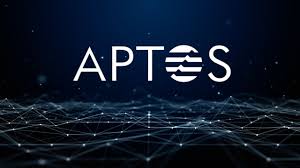The blockchain world moves fast, and every year brings a fresh wave of projects aiming to solve the persistent challenges of scalability, security, and usability. Among the newer players generating buzz is Aptos, a Layer 1 blockchain that’s been turning heads with its bold promises and innovative tech. Launched in October 2022, Aptos has positioned itself as a high-throughput, low-latency blockchain designed to handle the demands of a global, decentralized ecosystem. But what makes Aptos stand out in a crowded field of blockchains like Ethereum, Solana, and Cardano? Let’s dive into what Aptos is, how it works, and why it might just be a game-changer.
What is Aptos?
Aptos is a proof-of-stake (PoS) Layer 1 blockchain built from the ground up to address some of the biggest pain points in blockchain technology: scalability, speed, and developer accessibility. It was created by Aptos Labs, a team founded by former Meta employees who worked on the Diem project (Meta’s abandoned blockchain initiative). The team brought their expertise in distributed systems and cryptography to create a platform that’s both developer-friendly and capable of handling massive transaction volumes.
The Aptos blockchain is designed with a mission to enable a decentralized, secure, and scalable ecosystem for Web3 applications. Whether it’s DeFi platforms, NFT marketplaces, or decentralized social networks, Aptos aims to provide the infrastructure to support billions of users without compromising on performance or security. Its tagline, “Building the safest and most scalable Layer 1 blockchain,” isn’t just marketing fluff—it’s backed by some serious tech.
The Tech Behind Aptos
At the heart of Aptos is its unique approach to blockchain architecture. Let’s break down the key components that make it tick.
1. Move Programming Language
One of Aptos’ standout features is its use of the Move programming language, originally developed for Meta’s Diem project. Move is a Rust-based language designed specifically for blockchain development, with a focus on security and flexibility. Unlike Solidity (Ethereum’s primary programming language), Move is built to prevent common vulnerabilities like reentrancy attacks, which have plagued DeFi protocols in the past.
Move uses a resource-oriented programming model, meaning assets (like tokens) are treated as unique, non-duplicable resources. This makes it easier to write secure smart contracts and reduces the risk of bugs that could lead to hacks. For developers, Move is a breath of fresh air—it’s intuitive, reduces complexity, and allows for rapid prototyping of decentralized applications (dApps).
2. Block-STM Execution Engine
Aptos’ secret sauce for scalability lies in its Block-STM (Software Transactional Memory) execution engine. Unlike traditional blockchains that process transactions sequentially, Aptos processes them in parallel, dramatically increasing throughput. The Block-STM engine uses optimistic concurrency control, which assumes transactions are independent and validates them after execution. If conflicts arise, the engine resolves them efficiently, ensuring no bottlenecks.
This parallel execution allows Aptos to achieve theoretical throughput of up to 160,000 transactions per second (TPS) with sub-second latency. Compare that to Ethereum’s current 15-30 TPS or even Solana’s 65,000 TPS under ideal conditions, and you can see why Aptos is turning heads. While real-world performance depends on network conditions, Aptos’ architecture is built to scale as adoption grows.
3. Proof-of-Stake Consensus with Byzantine Fault Tolerance
Aptos uses a proof-of-stake consensus mechanism with a twist: it incorporates a Byzantine Fault Tolerant (BFT) protocol called AptosBFT. This ensures the network remains secure even if up to one-third of validators act maliciously or go offline. The BFT approach also contributes to Aptos’ low latency, as it minimizes the time needed to reach consensus on transactions.
Validators on Aptos stake the native APT token to participate in consensus and earn rewards. The PoS model is energy-efficient compared to proof-of-work systems like Bitcoin, aligning with the growing demand for sustainable blockchain solutions.
4. Modular Architecture
Aptos’ modular design separates key functions like transaction execution, storage, and consensus. This allows for greater flexibility and easier upgrades. For example, developers can swap out components or optimize specific parts of the system without overhauling the entire blockchain. This modularity makes Aptos future-proof, as it can adapt to new technologies or use cases without major disruptions.
Why Aptos
So, why should you care about Aptos in a world already brimming with blockchain platforms? The answer lies in its potential to bridge the gap between Web3’s lofty ambitions and real-world usability.
Scalability for Mass Adoption
One of the biggest hurdles for blockchain adoption is scalability. Most blockchains struggle to handle the transaction volumes needed for mainstream applications like global payment systems or social media platforms. Aptos’ high TPS and low latency make it a strong contender for powering Web3 apps that can rival centralized platforms in performance. Imagine a decentralized Twitter or TikTok running smoothly with millions of users—that’s the kind of future Aptos is aiming for.
Developer-Friendly Ecosystem
Aptos is doubling down on making life easier for developers. The Move language, combined with robust tooling like the Aptos CLI and SDKs, lowers the barrier to entry for building dApps. The blockchain also supports upgradable smart contracts, meaning developers can fix bugs or add features without redeploying entirely new contracts—a huge win for iterative development.
Aptos Labs has also invested heavily in developer education, offering tutorials, hackathons, and grants through the Aptos Foundation. This focus on community and developer support is critical for fostering a vibrant ecosystem of dApps.
Security Without Compromise
Security is non-negotiable in blockchain, especially after high-profile hacks that have cost the industry billions. Aptos’ Move language and robust consensus mechanism minimize vulnerabilities, while its modular design allows for quick patches if issues arise. For users and developers alike, this means greater confidence in deploying and interacting with dApps.
Real-World Use Cases
Aptos is already attracting projects across DeFi, NFTs, gaming, and more. For example, decentralized exchanges (DEXs) like PancakeSwap have deployed on Aptos, leveraging its high throughput for fast, low-cost trading. NFT marketplaces are also popping up, taking advantage of Aptos’ ability to handle large-scale minting and trading without gas fee spikes. Gaming is another promising area, as Aptos’ low latency is perfect for real-time, on-chain interactions in play-to-earn or metaverse projects.
The APT Token and Ecosystem
The native token of the Aptos blockchain, APT, serves multiple purposes. It’s used for paying transaction fees, staking for network security, and participating in governance. The token’s initial distribution was controversial, with some in the crypto community criticizing the allocation to insiders and early investors. However, Aptos Labs has since focused on transparency, releasing detailed tokenomics and committing to community-driven governance.
The Aptos ecosystem is growing rapidly, with partnerships and integrations across wallets, exchanges, and dApps. Major players like Binance, Coinbase, and OKX support APT trading, while wallets like Petra and Martian make it easy for users to interact with the network. The Aptos Foundation’s grant program is also fueling innovation, with hundreds of projects in development.
Challenges/Competition
No blockchain is without challenges, and Aptos is no exception. The Layer 1 space is fiercely competitive, with established players like Ethereum and Solana commanding significant market share. Ethereum’s dominance in DeFi and NFTs, combined with its upcoming upgrades, makes it a formidable rival. Solana, with its similar focus on high throughput, is another direct competitor.
Aptos also faces the hurdle of building a robust ecosystem from scratch. While it has attracted developers, it’s still early days compared to Ethereum’s mature dApp landscape. Network adoption will depend on Aptos’ ability to deliver on its promises and attract users with compelling applications.
The Road Ahead
Aptos is still in its infancy, but its potential is undeniable. With a strong technical foundation, a focus on developer experience, and a vision for mass adoption, it’s well-positioned to carve out a niche in the blockchain world. The team’s experience from Diem gives them a unique perspective on building for scale, and their commitment to community engagement bodes well for long-term growth.
As Web3 continues to evolve, Aptos could play a pivotal role in bringing decentralized technology to the masses. Whether it’s powering the next big DeFi protocol, a viral NFT collection, or a decentralized social platform, Aptos has the tools to make it happen. For developers, investors, and crypto enthusiasts, keeping an eye on Aptos is a no-brainer—it just might be the blockchain that takes Web3 to the next level.
Ending
Aptos is more than just another Layer 1 blockchain—it’s a bold attempt to rethink how decentralized systems can scale, secure, and empower developers. Its combination of the Move language, Block-STM engine, and modular architecture sets it apart in a crowded field. While challenges remain, Aptos’ focus on usability and performance makes it a project worth watching. Whether you’re a developer looking to build the next big dApp or a user exploring Web3, Aptos offers a glimpse into the future of blockchain. So, dive in, explore the ecosystem, and see what this exciting new platform has in store.




























Still hate Aptos. Lost the first big Aptos airdrop cos of technical issue
Excited about its potential for scalable DeFi and NFT projects, especially with the focus on developer-friendly tools. Curious to see how it competes with other Layer-1s like Solana!
Aptos was huge when it launched. Not so much now. We can only hope in this space
Aptos was great back in the day 🎉. Miss those times
APTOS IS QUITE GOOD, BUT I STILL DIG SUI
Awesome breakdown of Aptos! I hadn’t heard much about it before, but the focus on scalability and Move language sounds promising. Do you think it can compete with giants like Ethereum in the long run?
Insightful dive into Aptos! Its Move language and high-throughput design make it a compelling player in the blockchain space.